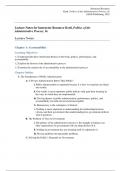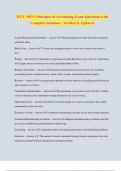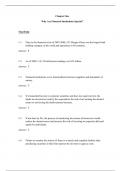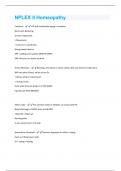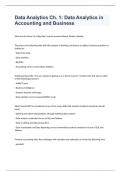Exam (elaborations)
Lecture Notes for Politics of the Administrative Process, 8th Edition by Kettl Donald | All Chapter A+
- Course
- Institution
- Book
Lecture Notes for Politics of the Administrative Process, 8th Edition by Kettl Donald | All Chapter A+ Lecture Notes: Chapter 1: Accountability Learning Objectives 1.1 Understand the three intertwined themes of the book: politics, performance, and accountability 1.2 Explore the history of th...
[Show more]
